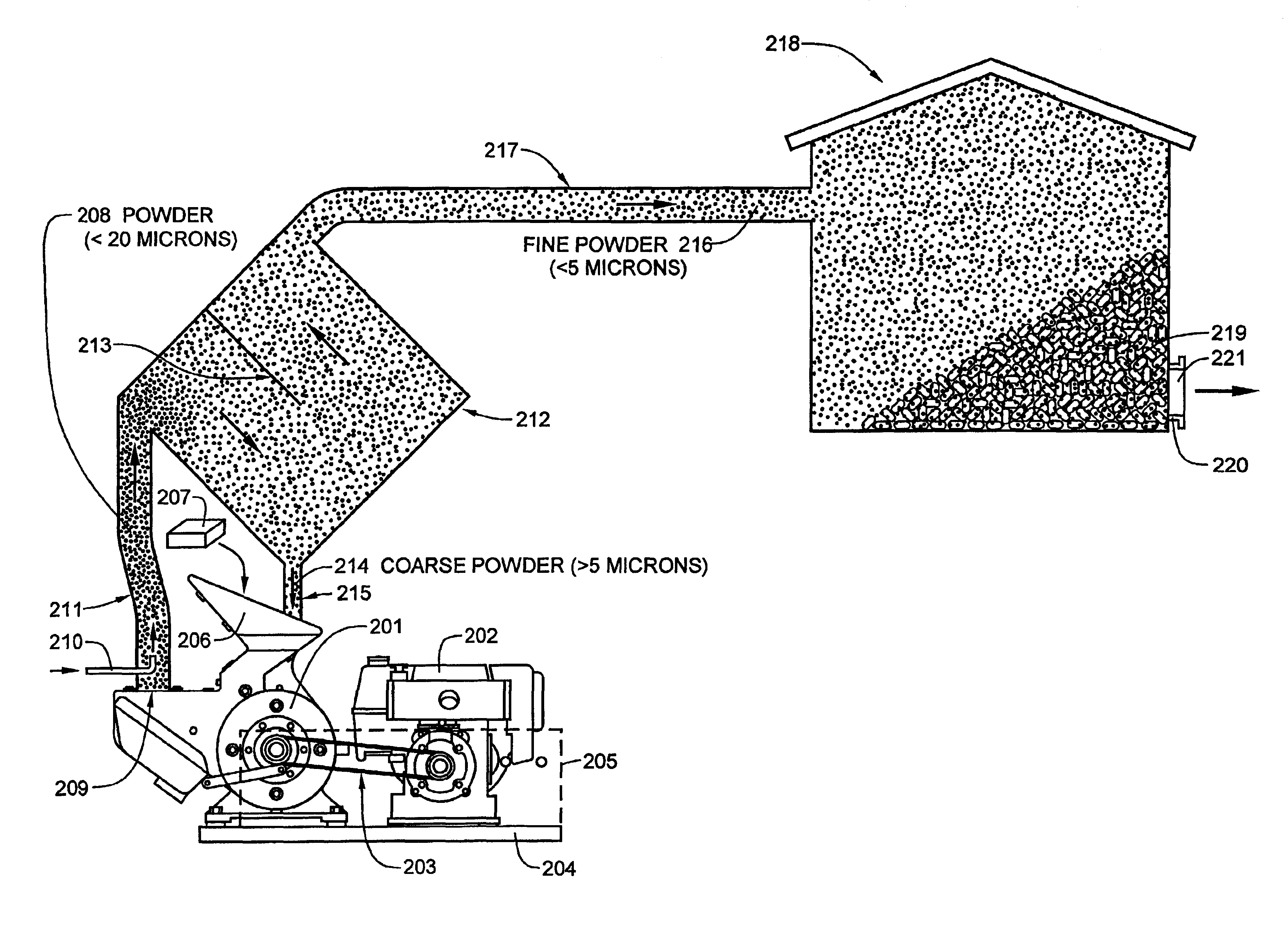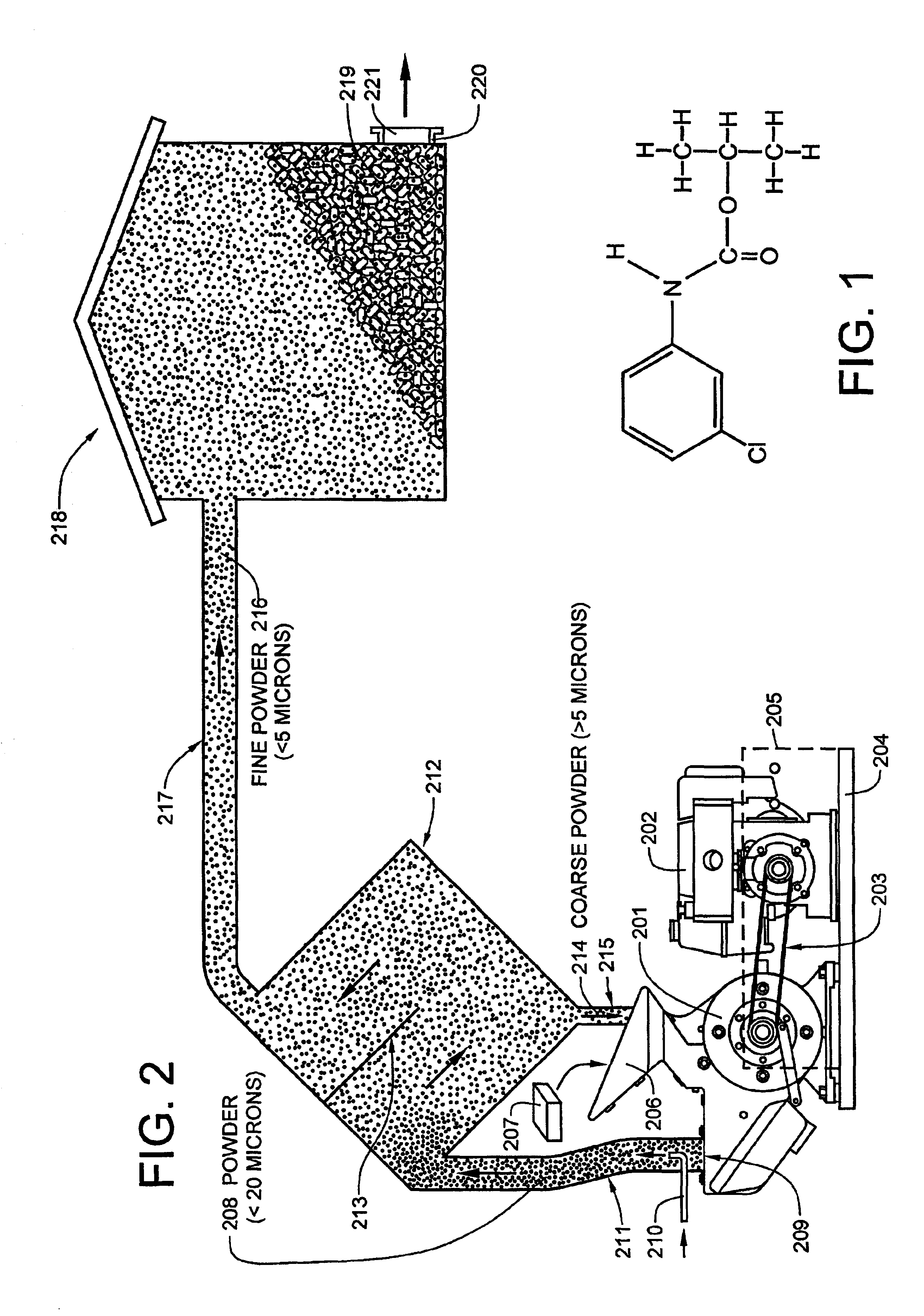Method and apparatus for treating tubers with a powdered organic compound
a technology of organic compound and powder, which is applied in the field of organic compound powder making methods and apparatuses, can solve the problems of inability to operate equipment for a long time, inability to treat tubers, and excessive loss due to tuber dehydration and diseas
- Summary
- Abstract
- Description
- Claims
- Application Information
AI Technical Summary
Benefits of technology
Problems solved by technology
Method used
Image
Examples
Embodiment Construction
The present invention provides both a process and apparatus for treating tubers in storage with chlorpropham (CIPC) dust or the dust of any other similar organic compound that is a solid at ambient temperatures. The process does not require the conversion of solid CIPC to a liquid, nor does it require the use of a heated airstream to vaporize or atomize the organic compound. The process includes the steps of forming minute particles of solid CIPC particles from a block or chunks of solid CIPC, and inducting the particles into an airstream which transports the particles to a tuber storage shed. A distinguishing feature of the invention is that, for the preferred embodiment of the process, the airstream is maintained at or below ambient temperature.
The process and preferred apparatus used to implement the process will now be described with reference to the attached drawing figures. It should be understood that the drawings are not to scale, as they are intended to be merely descriptiv...
PUM
| Property | Measurement | Unit |
|---|---|---|
| temperature | aaaaa | aaaaa |
| temperature | aaaaa | aaaaa |
| temperatures | aaaaa | aaaaa |
Abstract
Description
Claims
Application Information
 Login to View More
Login to View More - R&D
- Intellectual Property
- Life Sciences
- Materials
- Tech Scout
- Unparalleled Data Quality
- Higher Quality Content
- 60% Fewer Hallucinations
Browse by: Latest US Patents, China's latest patents, Technical Efficacy Thesaurus, Application Domain, Technology Topic, Popular Technical Reports.
© 2025 PatSnap. All rights reserved.Legal|Privacy policy|Modern Slavery Act Transparency Statement|Sitemap|About US| Contact US: help@patsnap.com



